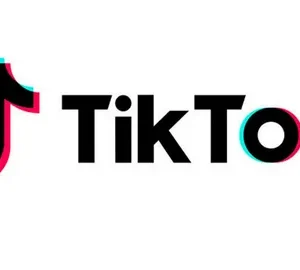Life after a major relationship shift—whether it’s a breakup, separation, or divorce—can feel like standing in the middle of an emotional storm. The familiar rhythms of daily life suddenly disappear, replaced by uncertainty and emotional upheaval. Yet, within this chaos lies an opportunity to rediscover inner balance and rebuild a stronger, more authentic version of yourself. Restoring equilibrium is not a quick process, but rather a journey that involves acceptance, healing, and self-renewal.
Understanding the Emotional Impact
The end of a significant relationship often brings with it a mix of conflicting emotions—grief, anger, relief, fear, and confusion. These feelings are natural responses to loss. Many people underestimate how deeply their identity and stability become intertwined with their partner or shared life. When that connection is severed, it can leave a void that feels impossible to fill.
During this period, emotional turbulence is a sign of transformation, not failure. The pain you feel is your heart’s way of processing change and adjusting to a new reality. Instead of suppressing these emotions, it’s important to acknowledge them. Healing begins when you give yourself permission to feel, without judgment or guilt.
Acknowledging the Phases of Adjustment
Every person’s journey through change is unique, but the emotional process often follows familiar patterns. For instance, the 5 stages of divorce—denial, anger, bargaining, depression, and acceptance—illustrate the emotional evolution many people experience after a separation. These stages don’t always unfold in order, nor are they exclusive to divorce; they can apply to any major relationship shift. Understanding that these emotions are part of a universal healing process can offer comfort and clarity. Acceptance, the final stage, doesn’t mean forgetting or minimizing what happened. It means finding peace in the reality of what is and allowing yourself to move forward without being weighed down by the past.
Finding Stability in Change
Restoring balance after a relationship shift begins with small, intentional actions. Start by reestablishing daily routines that bring you structure and predictability. This might include regular meal times, exercise, journaling, or mindfulness practices. Consistency helps ground you when emotions feel unpredictable.
It’s also essential to prioritize physical and emotional well-being. Get adequate rest, nourish your body with healthy food, and engage in activities that recharge your spirit. Spending time in nature, meditating, or practicing yoga can help restore inner calm. Balance is not found by erasing pain but by creating space for healing within it.
Reconnecting With Yourself
One of the most profound outcomes of a relationship ending is the opportunity to reconnect with who you are outside of that partnership. Over time, relationships often blur personal boundaries as partners adapt to each other’s needs and preferences. After separation, rediscovering your individuality becomes a key part of restoring balance.
Ask yourself: What brings me joy? What values and goals do I want to pursue now? Perhaps it’s time to revisit hobbies you once loved, explore new interests, or embark on a personal growth journey. Reconnection isn’t just about self-discovery—it’s about rebuilding a foundation based on self-respect, confidence, and authenticity.
Building a Supportive Environment
Healing in isolation can be difficult. Surrounding yourself with supportive people can make a tremendous difference. Trusted friends, family members, or even professional counselors can provide the compassion, perspective, and encouragement needed during difficult times.
Joining support groups or community activities can also remind you that you’re not alone in this journey. Hearing others share their experiences helps normalize your emotions and provides valuable insights. Human connection, empathy, and shared understanding are powerful tools for regaining emotional equilibrium.
Learning From the Past Without Living in It
Reflecting on the past is natural, but there’s a fine line between reflection and rumination. It’s easy to get trapped in cycles of “what if” or “if only,” which can prevent true healing. Instead, focus on understanding what lessons can be drawn from the experience.
Perhaps you learned more about your emotional needs, communication style, or boundaries. Recognizing patterns—both positive and negative—can empower you to approach future relationships from a place of clarity rather than pain. Remember, growth does not require perfection. It simply asks for awareness and the willingness to evolve.
Rediscovering Hope and Purpose
As time passes, you’ll notice subtle shifts. The pain that once felt overwhelming begins to ease. You’ll laugh more freely, sleep more soundly, and feel less burdened by the past. These are signs that balance is returning.
To solidify this transformation, cultivate new sources of meaning and purpose. Volunteer work, creative pursuits, or professional development can provide fulfillment and direction. When your energy is channeled into something constructive, it helps rebuild your sense of self-worth and hope for the future.
Hope is not naïve—it’s a recognition that healing is possible and that life still holds beauty and potential, even after heartbreak.
Embracing a New Beginning
Restoring balance after a major relationship shift ultimately means embracing change as a natural part of life’s evolution. Every ending carries within it the seed of a new beginning. While it may take time to find your footing again, each small step toward self-care, acceptance, and personal growth contributes to a renewed sense of harmony.
You are not defined by what you’ve lost but by how you rise after loss. The person emerging from this transition is wiser, stronger, and more compassionate than before. This is not the end of your story—it’s the beginning of a new chapter written with resilience and self-awareness.
Conclusion: A Path Toward Inner Balance
Restoring balance after a major relationship shift is a deeply personal and often transformative journey. It requires patience, courage, and a willingness to face discomfort head-on. Yet within that process lies immense potential for renewal.
By understanding the emotional phases, nurturing your well-being, reconnecting with your authentic self, and embracing new possibilities, you can turn loss into an opportunity for growth. Balance doesn’t mean returning to who you were before—it means becoming the person you were always meant to be.
Through compassion and intentional healing, you can emerge not only whole but more centered, peaceful, and ready to move forward with strength and grace.





